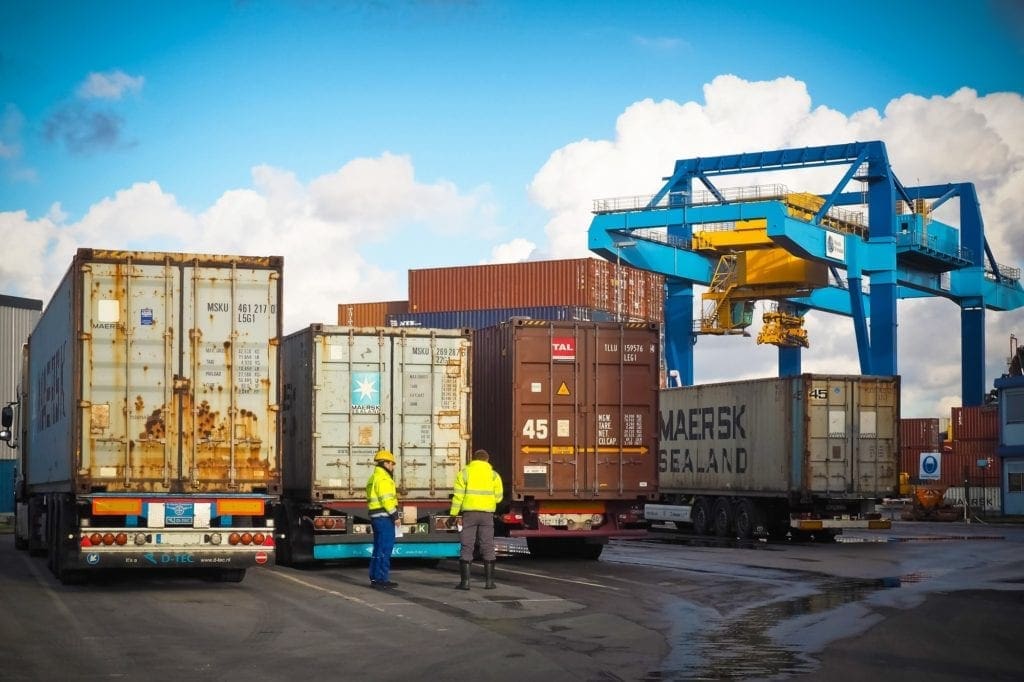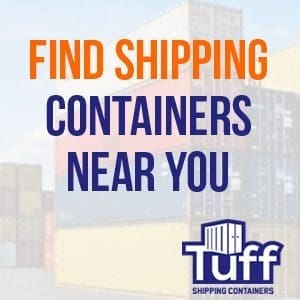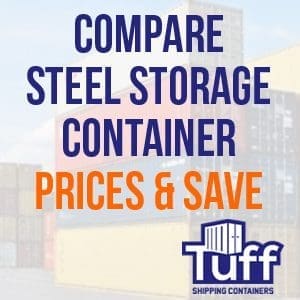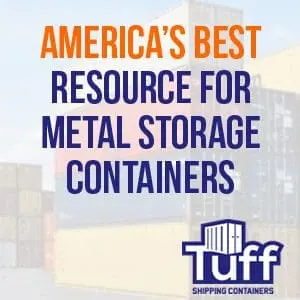
Step by Step Guide to Buying or Renting a Shipping Container
In an increasingly globalized world, the versatility and functionality of shipping containers have expanded beyond their traditional use in transportation. They are now widely utilized for storage, modular construction, and even as bases for innovative architectural projects. Whether you’re looking to buy or rent, the process can be intricate. This comprehensive guide aims to simplify it, ensuring you make an informed decision that suits your specific needs.
Step 1: Determine the Purpose
When embarking on the journey of purchasing or renting a shipping container, the first and most crucial step is to define its intended purpose. The versatility of shipping containers allows them to be adapted for various applications, each requiring different specifications, modifications, and considerations. Here’s an in-depth exploration of common uses and the importance of determining your specific container needs.
Understanding Your Requirements
- Storage vs. Construction: Identify if the container will be used for storage, as a living space, office, or for any other specific purpose. Different uses may require different types of containers.
- Duration of Use: Decide whether a short-term rental is more appropriate for your needs or if purchasing a container is a better long-term investment.
The Versatility of Shipping Containers
General and Specialized Storage
Shipping containers are widely recognized for their robust and secure storage capabilities. They are ideal for storing tools, equipment, inventory, or personal items. Additionally, they cater to specialized storage needs, such as temperature-controlled environments for perishable goods, which are typically served by refrigerated containers.
Commercial and Retail Applications
The portability and modifiable nature of shipping containers make them perfect for innovative commercial spaces. They are increasingly popular as trendy pop-up shops, cafes, and unique office spaces, offering a blend of functionality and aesthetic appeal.
Residential and Architectural Adaptations
There’s a growing trend of converting shipping containers into sustainable, cost-effective homes, guest houses, and living spaces. They are also being utilized in community development projects, such as makeshift libraries, clinics, or classrooms, particularly in areas requiring quick and affordable solutions.
Industrial and Construction Utilization
In industrial settings, especially construction sites, shipping containers provide sturdy and movable on-site offices, meeting rooms, or workshops. They can be tailored with specific features like shelving, workbenches, and tool storage, catering to the unique demands of industrial environments.

Why Identifying the Purpose Is Crucial
Tailoring Size and Type to the Need
The intended use of the container significantly influences the choice of size and type. For instance, residential projects may require high-cube containers for additional space, while standard containers might suffice for basic storage.
Customization and Modification Requirements
Understanding the intended purpose is key to determining the level of modification needed. Residential uses typically require extensive alterations, including installation of windows, doors, and electrical systems, as opposed to the minimal adjustments needed for simple storage solutions.
Budget Allocation and Management
The purpose of the container also dictates budget considerations. Complex architectural projects demand a larger financial commitment compared to more straightforward applications like storage or basic office setups.
Navigating Regulatory Compliance
Different uses are subject to varying regulations and building codes. Residential and commercial adaptations often require adherence to specific standards and obtaining relevant permits, unlike simpler uses such as storage.
Assessing Longevity and Durability
The intended duration of use impacts the choice between new or used containers. Long-term applications, like building constructions, benefit from investing in new or gently used containers, while temporary solutions might be adequately served by older, more affordable models.
Considering Environmental Impact
For those prioritizing sustainability, the intended use should align with eco-friendly practices. This includes repurposing used containers or implementing energy-efficient modifications to reduce environmental impact.
Determining the intended use of a shipping container is a foundational step in the purchasing or renting process. It influences the type of container needed, the extent of modifications required, budget considerations, compliance with regulations, and environmental impact. A clear understanding of specific needs and objectives is essential for a successful and fulfilling shipping container project.


Step 2: Choose the Right Type and Size
After establishing the intended use of a shipping container, the next crucial step is selecting the right type and size. This decision is pivotal as it directly impacts the functionality, cost, and overall success of your project. Shipping containers come in various types and sizes, each designed to serve different needs and purposes. Understanding these options will help you make an informed choice that aligns with your specific requirements.
Understanding Container Types
Standard Containers
Standard containers, typically available in 20-foot and 40-foot lengths, are the most common type used in shipping and storage. They offer a balance of space and manageability, making them suitable for a wide range of applications.
High Cube Containers
These are similar to standard containers but offer additional height, usually one foot more. This extra space is particularly beneficial for storing taller items or for conversion projects that require more vertical space, like modular homes or offices.
Specialized Containers
For specific needs, there are specialized containers such as refrigerated containers for temperature-sensitive goods, open-top containers for easy loading of bulky items, and flat rack containers for oversized cargo. These specialized options cater to niche requirements that standard containers might not fulfill.
Assessing Container Sizes
Space Availability and Site Constraints
Consider the space where the container will be placed. It’s essential to ensure that there is enough room not only for the container itself but also for delivery and ongoing access. This consideration might limit the size or type of container you can realistically use.
Capacity and Volume Requirements
Reflect on the volume of goods you need to store or the space requirements of your project. A 20-foot container might be sufficient for smaller storage needs or compact living spaces, while a 40-foot container offers a substantially larger area, suitable for bigger projects or more significant storage requirements.
Why Size and Type Matter
Functional Fit
Choosing the right type and size ensures that the container will functionally meet your needs. For instance, a high cube container might be necessary for an office space with standing desks, while a standard container could suffice for storing a small amount of equipment.
Cost-Effectiveness
Larger and specialized containers typically come at a higher cost. Therefore, selecting the size and type that align with your actual needs can avoid unnecessary expenses. It’s about finding the right balance between fulfilling your requirements and staying within your budget.
Feasibility and Practicality
Some sites may have restrictions that make certain types of containers impractical. For example, a 40-foot container might be too large for a location with limited access or space constraints. In such cases, opting for a smaller container or considering a different type is necessary.
Customization Potential
Different types and sizes of containers offer varying degrees of customization potential. High cube containers, for example, provide more headroom, which can be advantageous for architectural projects. Understanding the customization potential of each type and size can help in planning modifications and alterations.


Step 3: Decide Between New or Used
New Containers
- Pros: Longer lifespan, better condition, and often come with a warranty.
- Cons: Higher cost compared to used containers.
Used Containers
- Pros: More affordable, environmentally friendly (as you’re reusing a container).
- Cons: Potential wear and tear, shorter lifespan, might have cosmetic imperfections.
Step 4: Inspect the Container
Physical Inspection
- Structural Integrity: Check for dents, rust, and holes. Ensure the doors function smoothly.
- Interior Condition: Look for signs of leaks, mold, or foul odors.
- Certification for Shipping: If you intend to use it for shipping, ensure it has a valid CSC (Container Safety Convention) plate.
Online Purchases
- Trusted Sellers: If inspecting in person isn’t feasible, purchase from a reputable seller and request detailed photos or certifications.
Step 5: Consider Modifications and Accessories
Once you have determined the purpose and selected the appropriate type and size of your shipping container, the next step is to consider any modifications and accessories that will enhance its functionality. Shipping containers offer a blank canvas for customization, allowing you to tailor them to a wide variety of uses. This step is crucial, especially if the container is being adapted for specific functional requirements beyond basic storage.
Essential Modifications for Different Uses
Insulation and Climate Control
- Crucial for Habitable Spaces: If the container is being used for living spaces, offices, or workshops, insulation is key to making the space comfortable and energy-efficient.
- Climate Control: In addition to insulation, installing HVAC systems (Heating, Ventilation, and Air Conditioning) can maintain a comfortable internal environment, essential in extreme weather conditions.
Electrical and Plumbing Installations
- Electrical Fittings: For most uses beyond simple storage, electrical installations are necessary. This includes lighting, outlets, and potentially more complex wiring for specific equipment or appliances.
- Plumbing Requirements: If the container is being converted into a living space, office, or any setup that requires a water supply and drainage, plumbing becomes a crucial modification.
Doors and Windows
- Additional Access Points: Installing additional doors can improve access, especially for larger containers or those divided into multiple sections.
- Natural Light and Ventilation: Adding windows not only provides natural light but also helps with ventilation, a key aspect of creating a comfortable interior space.
Security Enhancements
- Lockboxes and Security Systems: For storage use or when storing valuable items, enhancing the container’s security with lockboxes, heavy-duty padlocks, and even alarm systems is important.
Internal Fit-Outs
- Custom Shelving and Storage Solutions: Tailoring the interior with shelving, racks, or custom storage solutions can maximize the space’s efficiency, particularly for commercial or industrial storage uses.
- Partitioning: Creating separate areas or rooms within the container might be necessary for certain projects, like office spaces or living quarters.
Aesthetic Modifications
- Paint and External Treatments: Applying a fresh coat of paint or other treatments not only enhances the container’s appearance but can also provide additional protection from the elements.
- Interior Finishing: For habitable or commercial spaces, interior finishing such as flooring, paneling, and ceiling treatments can transform the container into a welcoming environment.



Accessories to Enhance Functionality
Ramps and Steps
- For containers used for storage, especially those with high floors, ramps can facilitate easier loading and unloading. Steps or staircases might be necessary for containers converted into buildings or offices.
Lighting and Fixtures
- Adequate lighting is crucial, whether it’s for storage visibility or creating a suitable work environment in a container office. Additional fixtures like fans or air conditioning units can also be considered based on the use case.
Custom Exterior Additions
- For architectural projects, exterior additions such as decks, awnings, or even green roofs can extend the living or usage space and enhance the container’s functionality and aesthetic appeal.
Step 6: Understand Delivery and Setup
Delivery Options
- Tilt Bed Truck: Common for small containers but requires ample space for unloading.
- Flatbed Truck: Used for larger containers; you may need a crane or forklift on-site for unloading.
Site Preparation
- Level Ground: Ensure the site is level to prevent issues with door operation or structural stress.
- Accessibility: Confirm that the delivery site is accessible and free of obstructions.
Step 7: Compare Prices and Vendors
Research
- Get Quotes: Obtain quotes from multiple vendors to compare prices.
- Check Reviews: Look at customer reviews and ratings to gauge reliability and service quality.
Hidden Costs
- Delivery Fees: These can vary significantly based on location and delivery method.
- Modification Costs: Factor these into your budget if customization is required.
Step 8: Finalize the Purchase or Rental Agreement
Documentation
- Review the Contract: Carefully read the terms and conditions before signing.
- Insurance: Consider insurance options, especially for high-value usage or modifications.
Payment
- Secure Payment: Use secure payment methods and ensure you receive a receipt or proof of purchase.
Buying or renting a shipping container can be a straightforward process with the right knowledge and preparation. By understanding your needs, choosing the appropriate type and size, inspecting for quality, and preparing for delivery, you can make a decision that effectively serves your purpose. Remember, each step is crucial in ensuring you get a container that not only fits your immediate needs but also provides longevity and value for your investment.

Leave a Reply